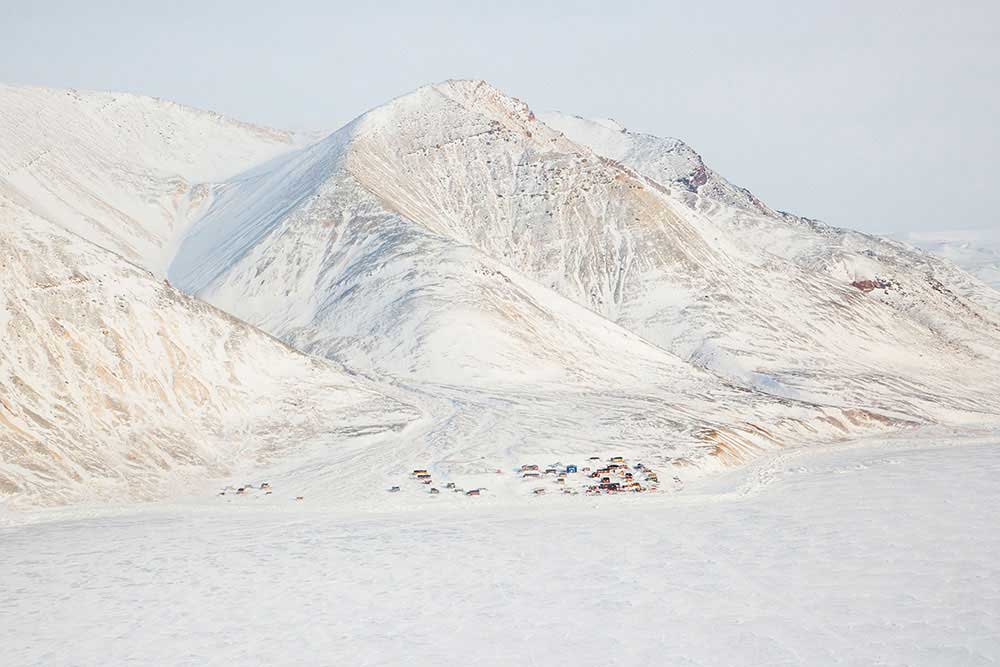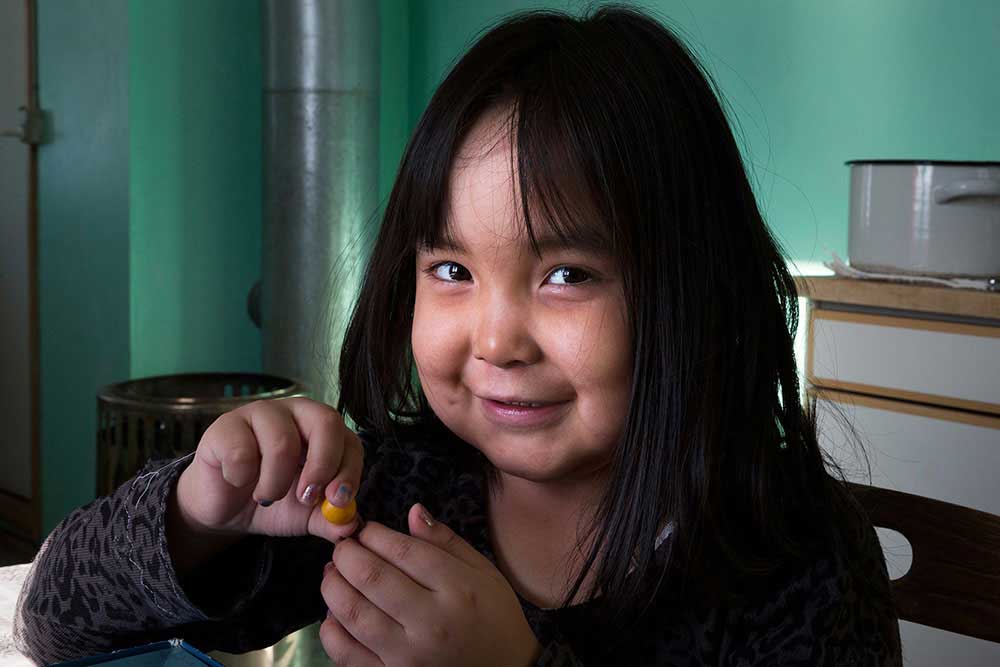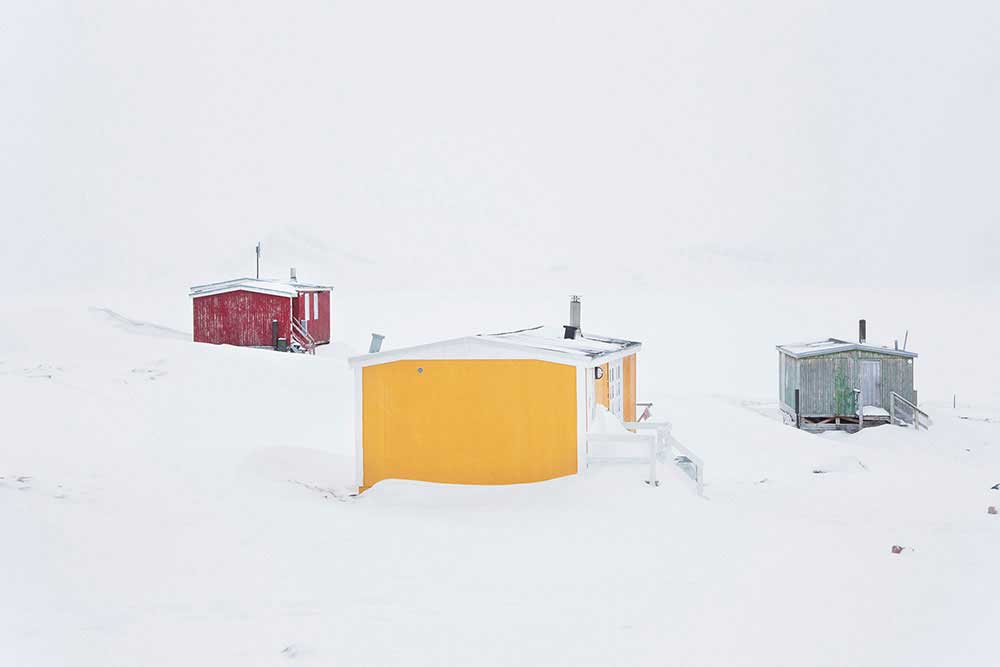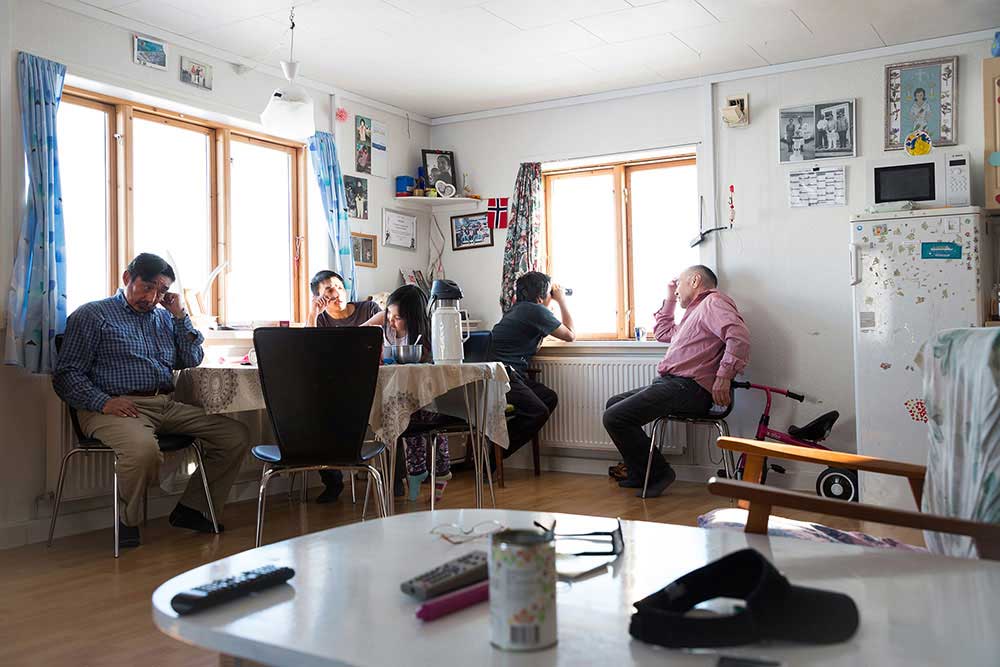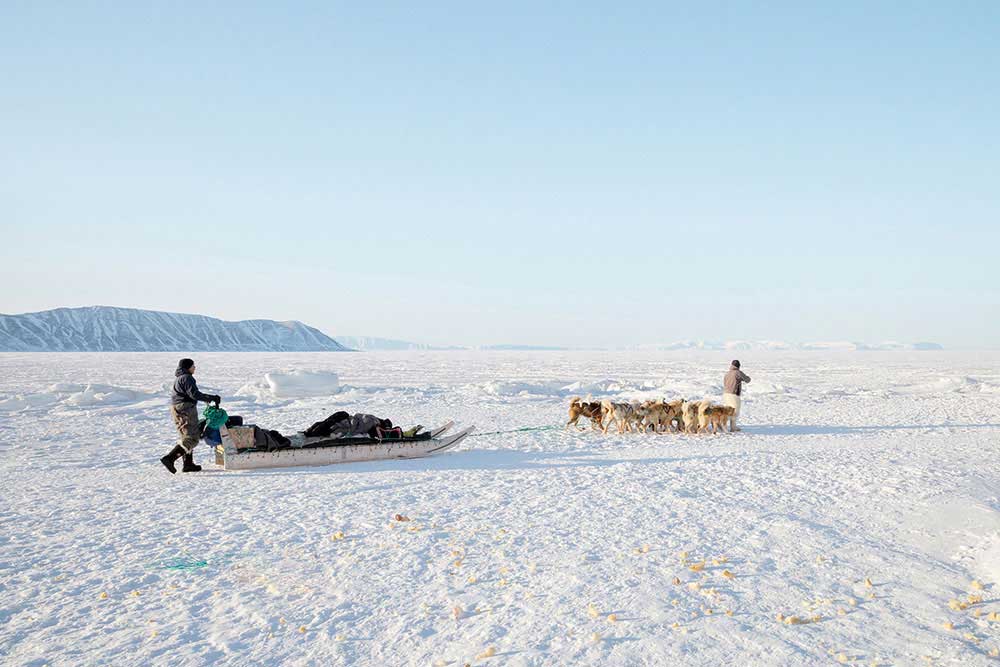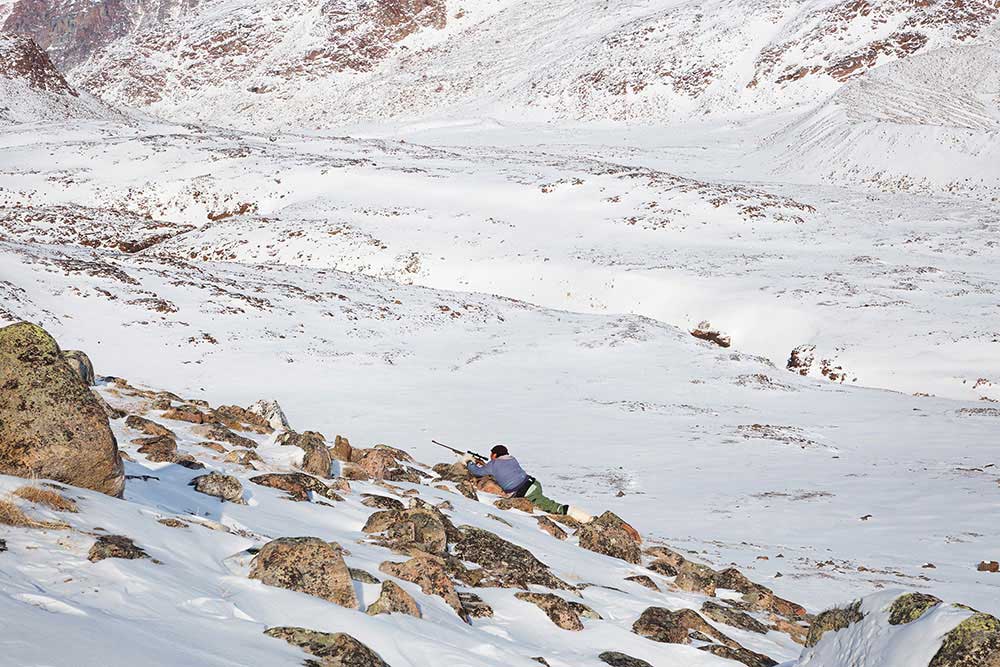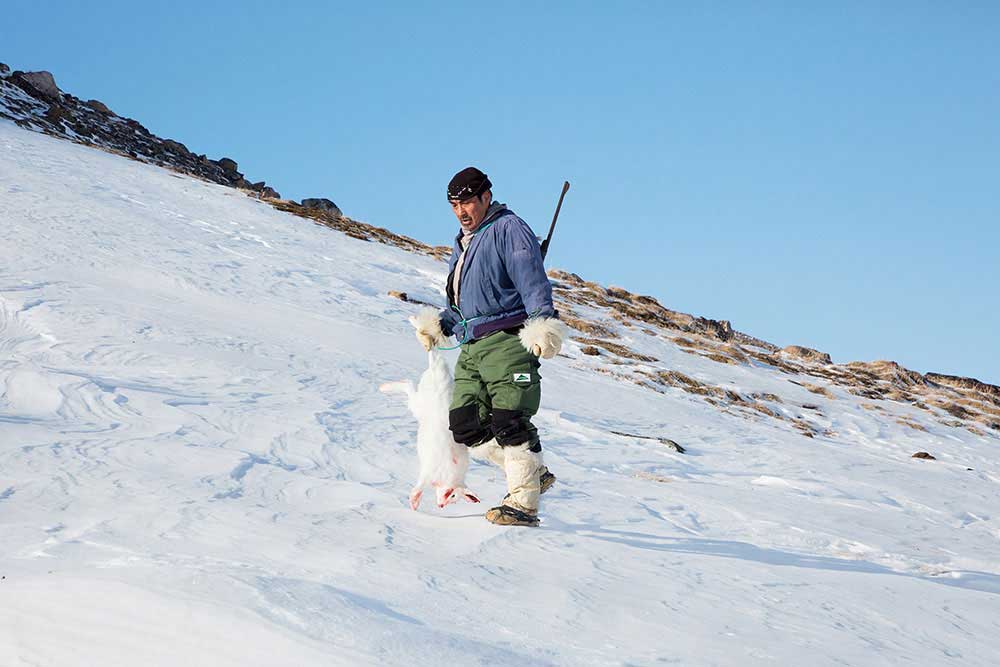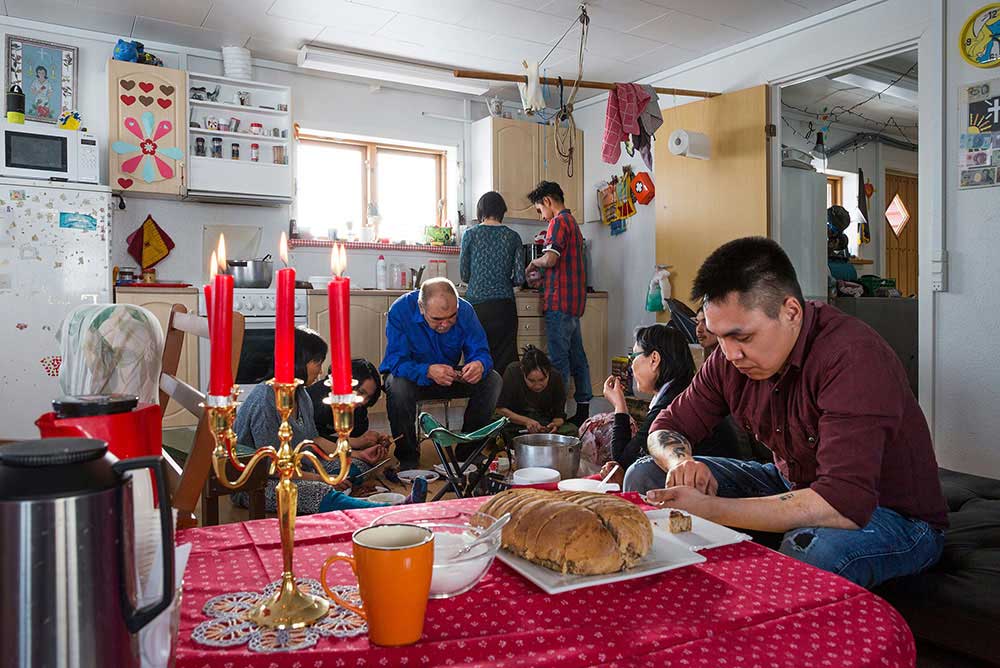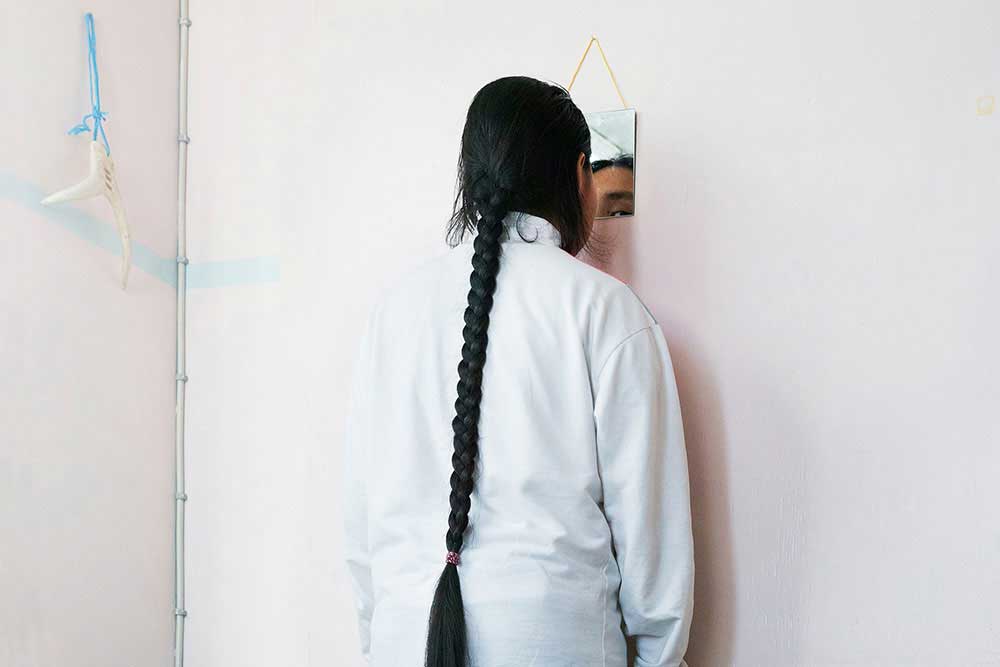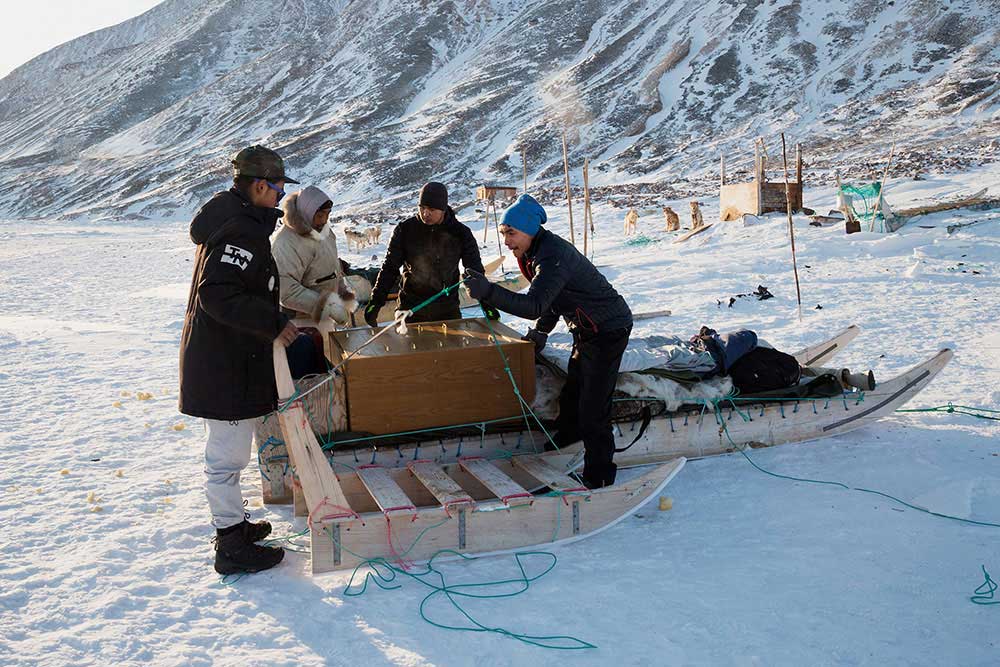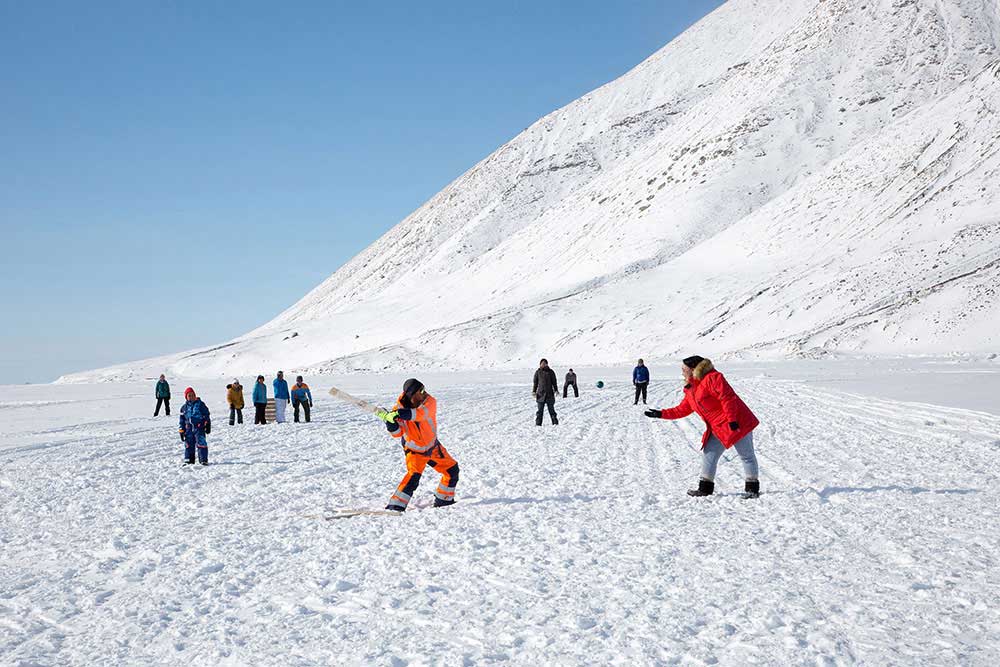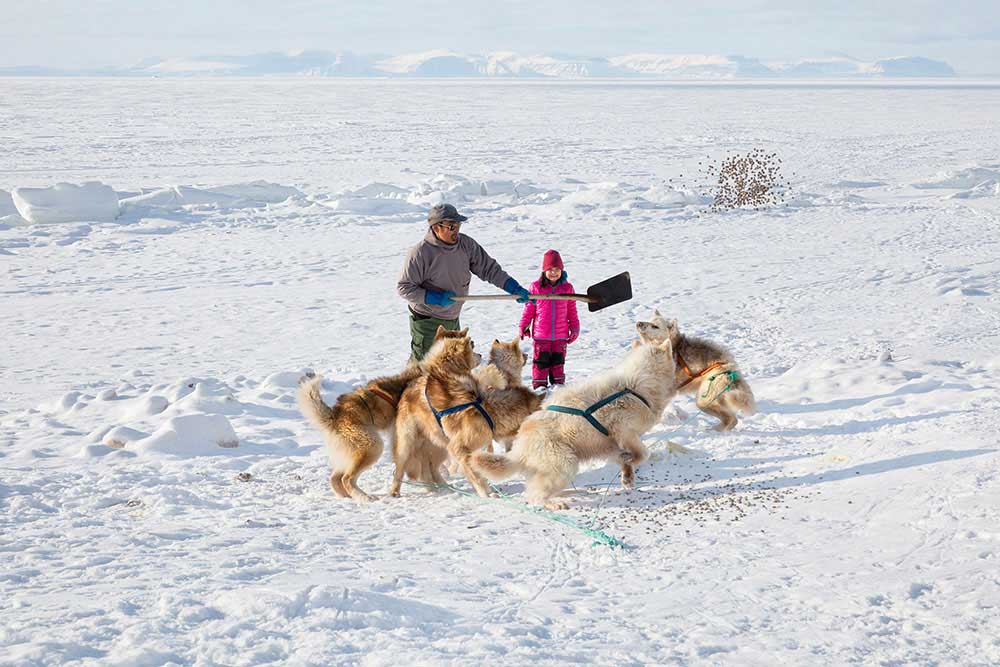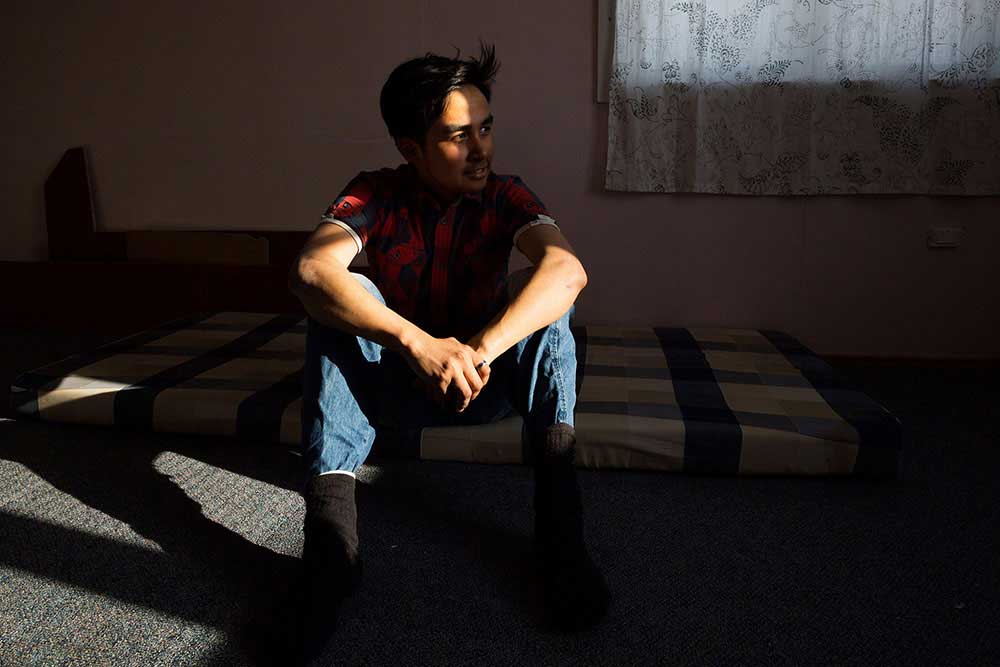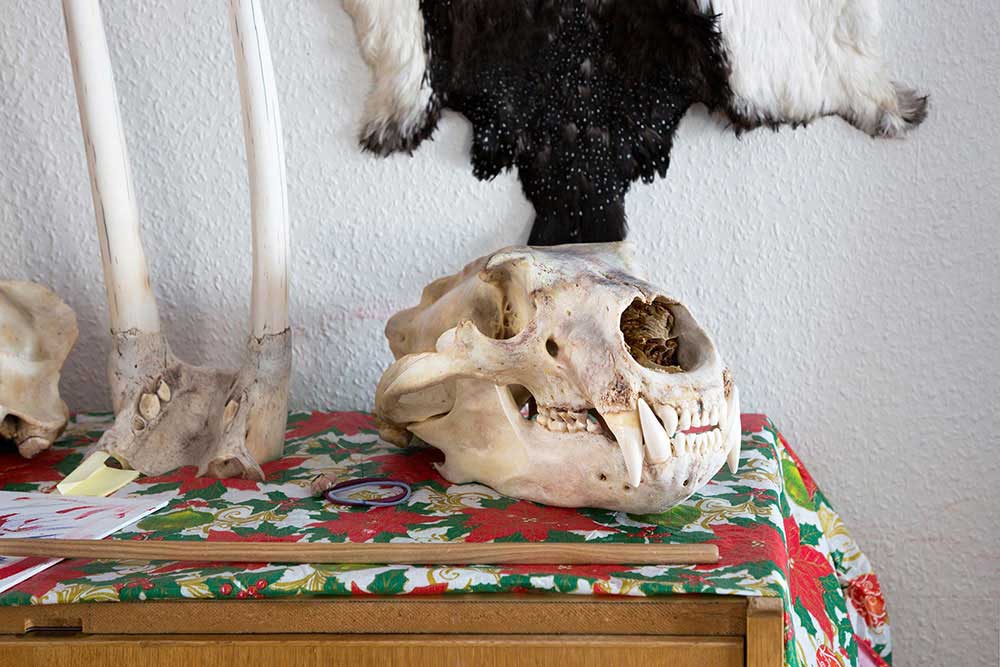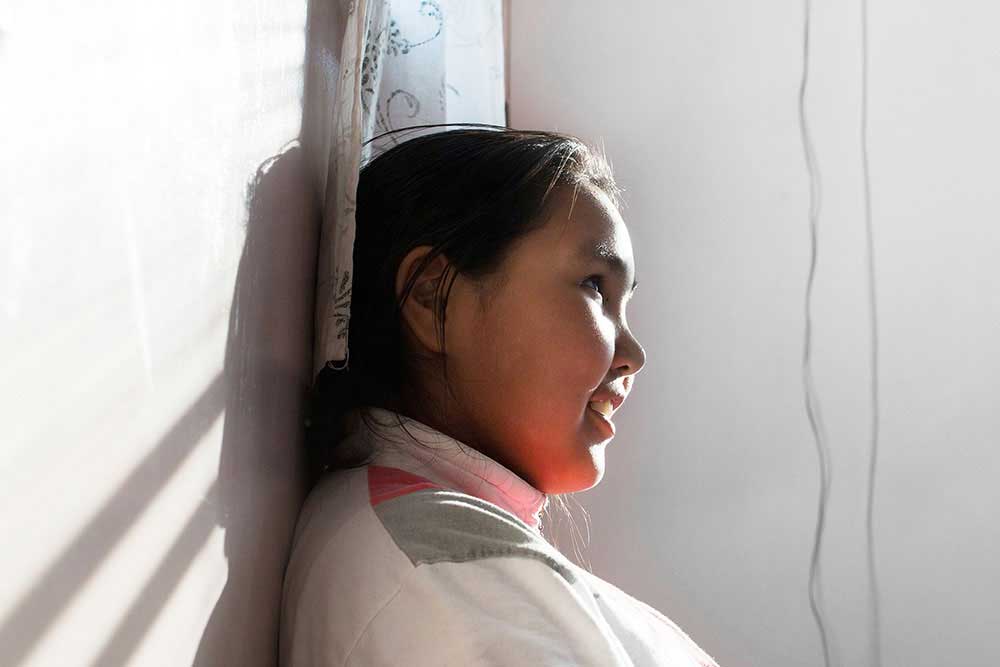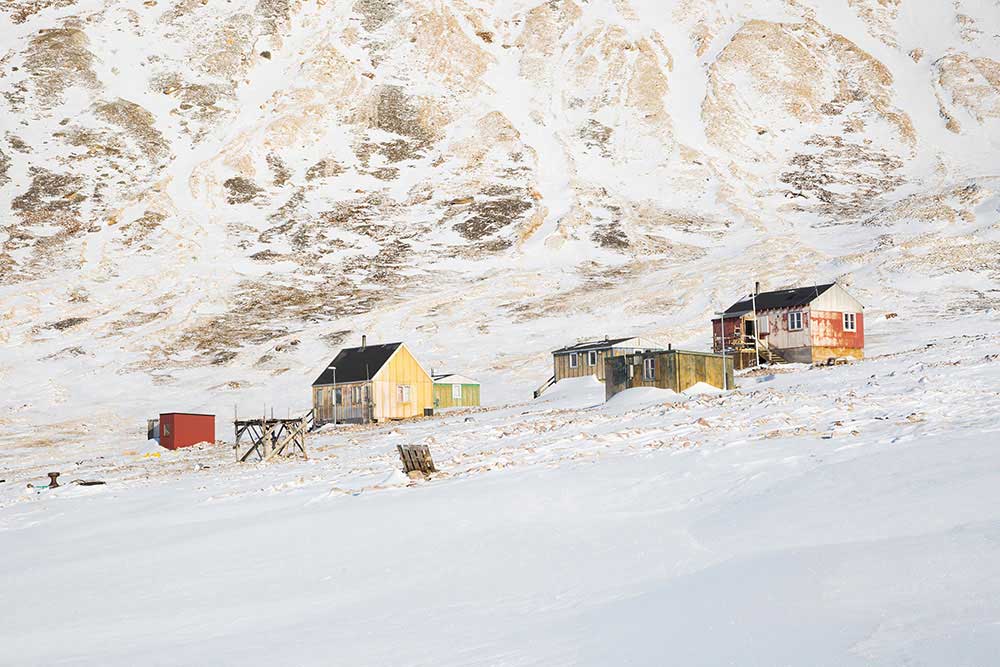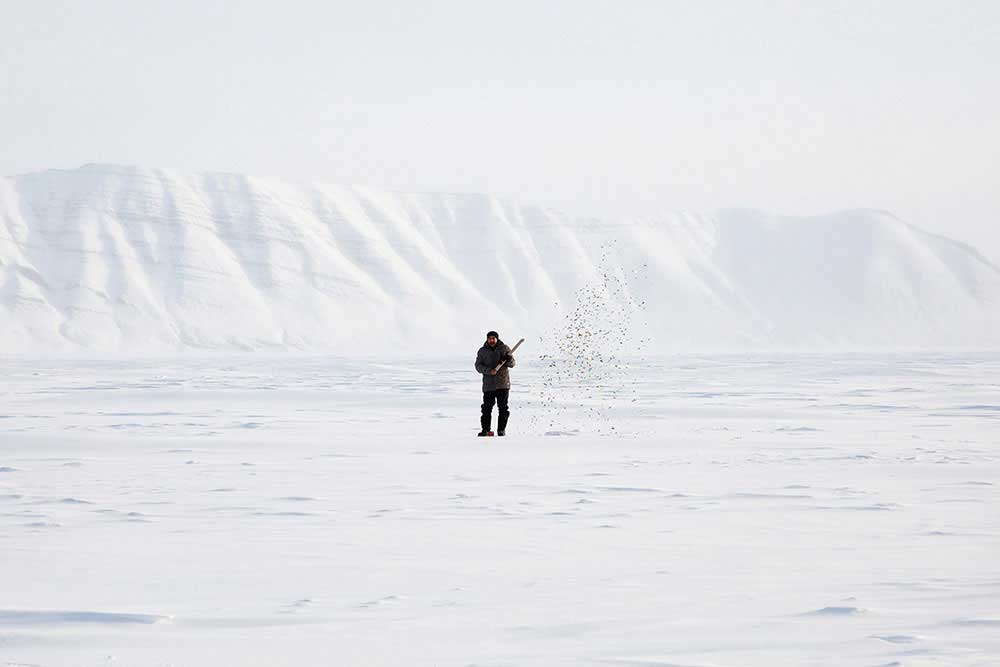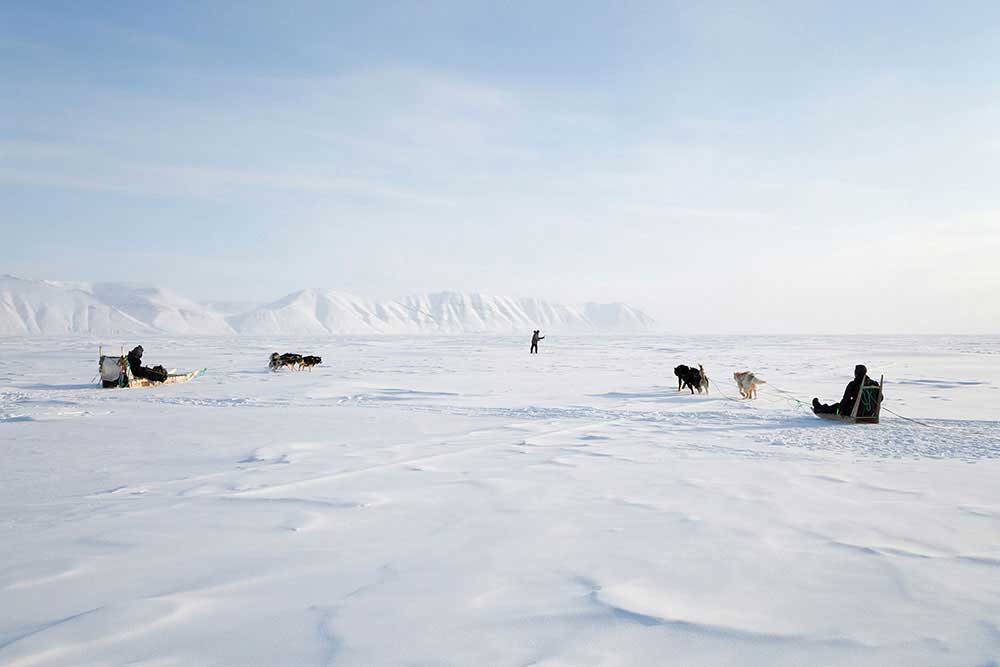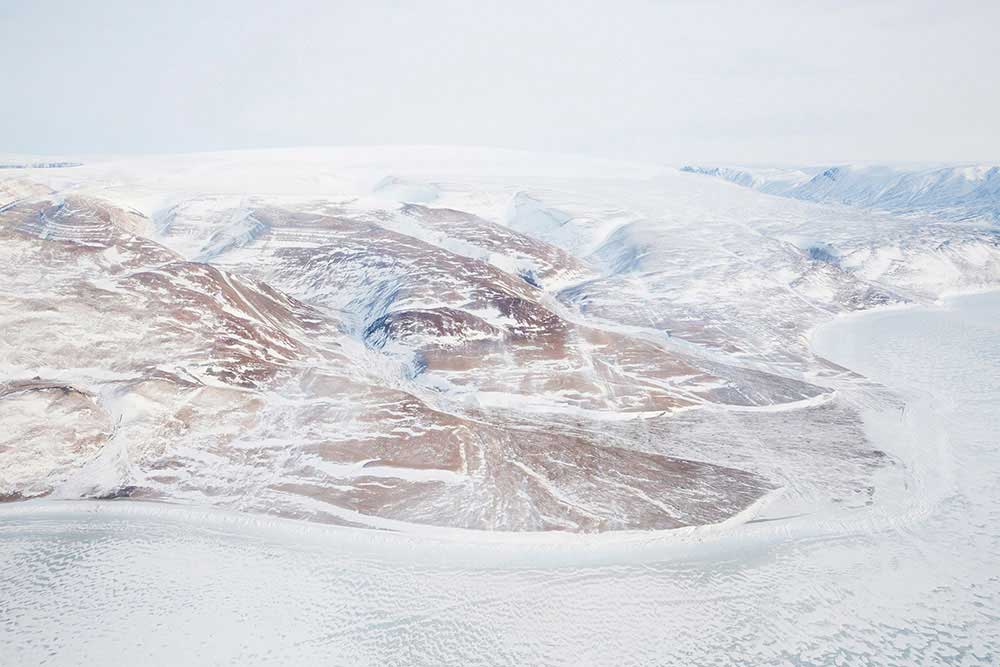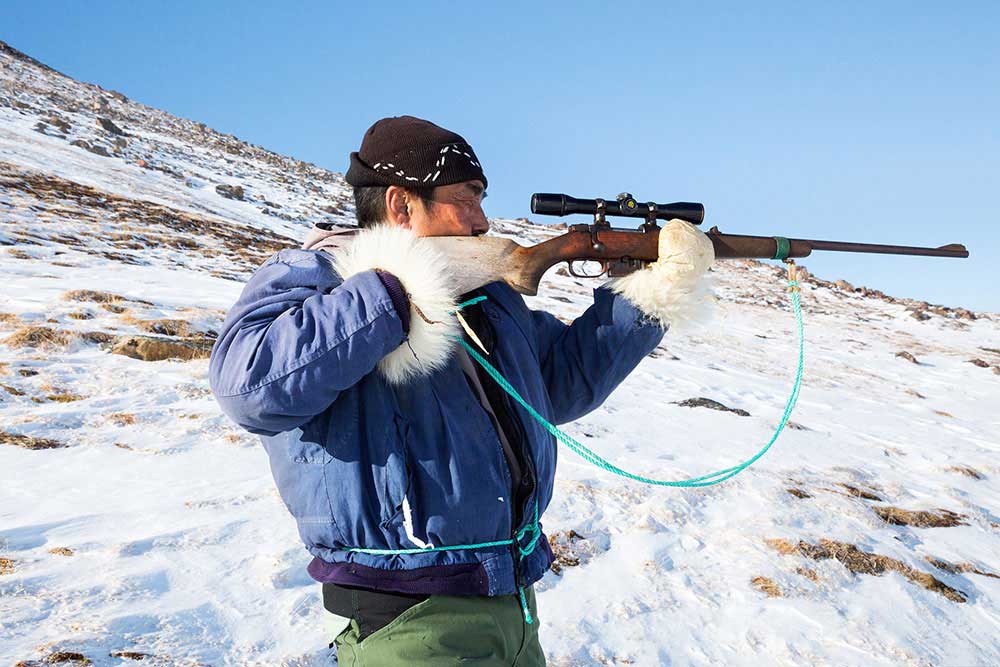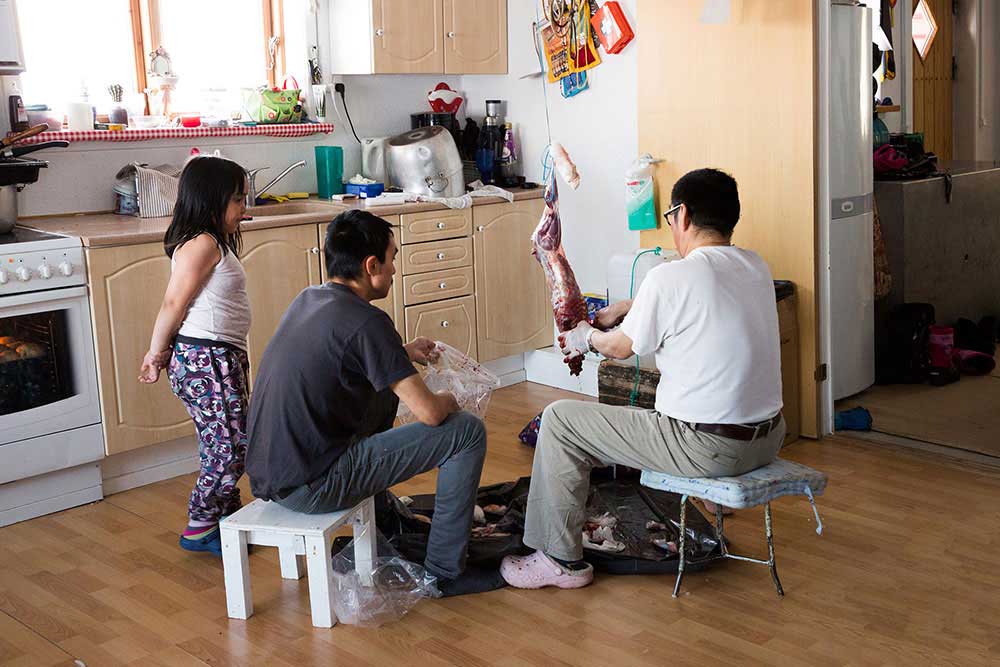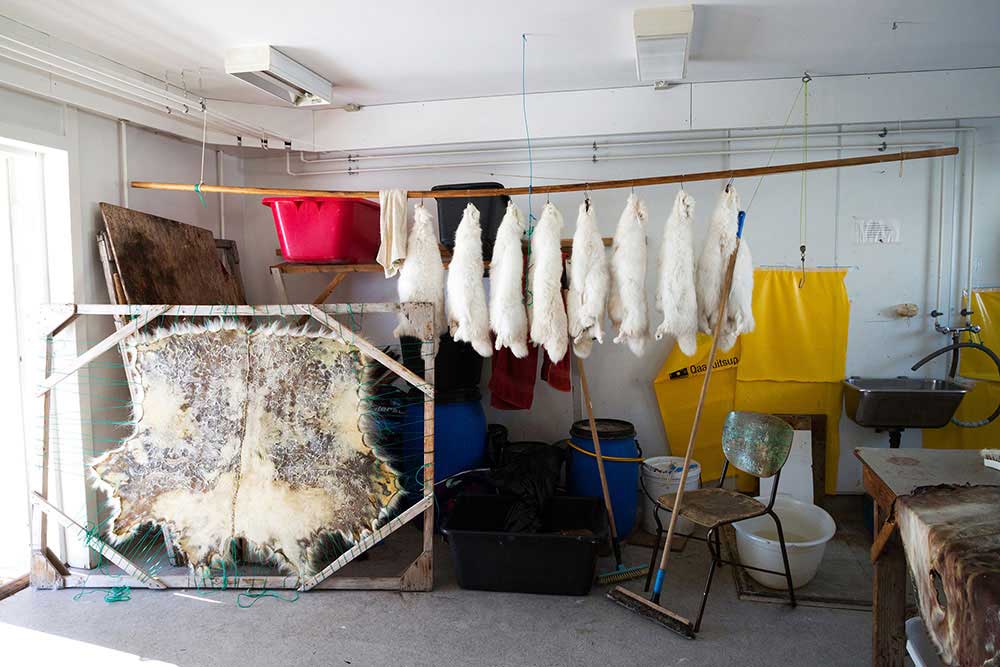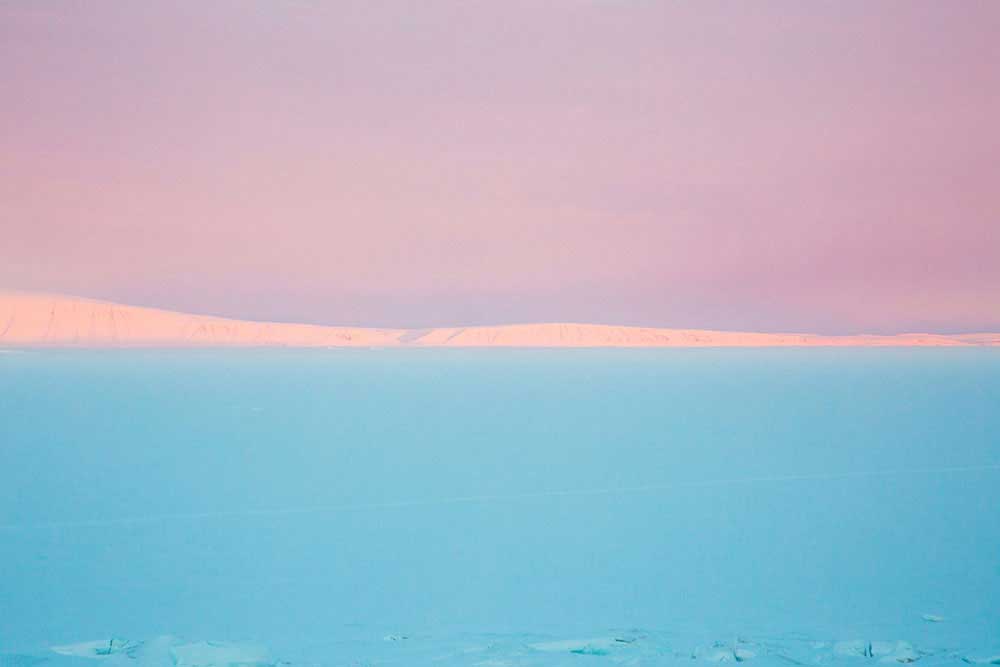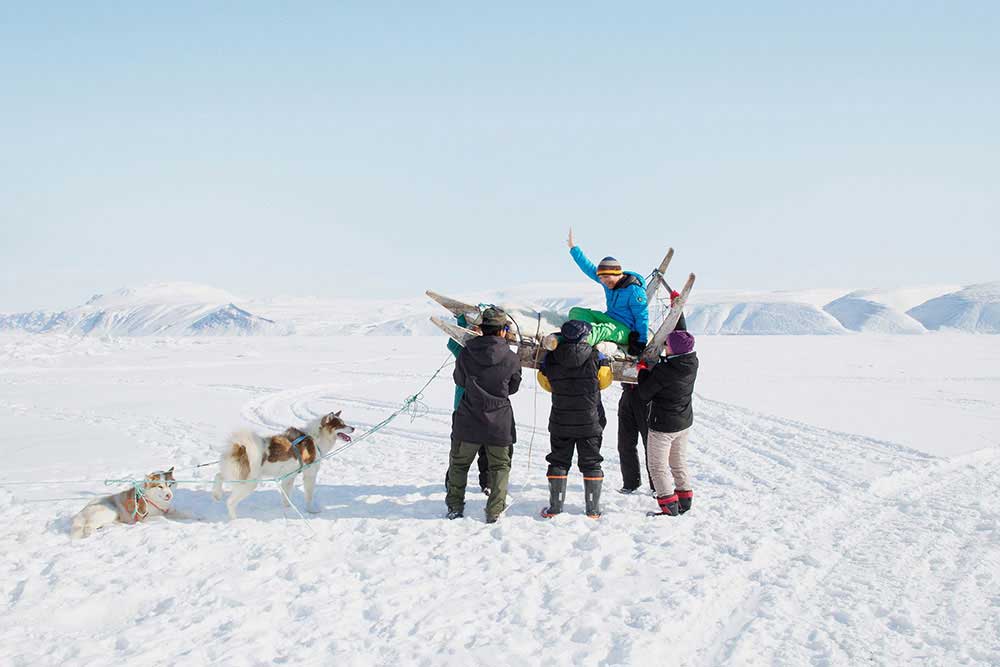Siorapaluk is the inhabited arctic village at the most northern part of Greenland, and of the planet. It is located on 78” lat. north and 1362km south from the North Pole.
Siora means sand in Greenlander. It has been named this way because under the layer of ice, a tiny beach is hidden. About forty people live there, most of them hunters and families. Several residents are descendants from Canadian Inuits, who migrated to Siorapaluk around 1880. The village has been made famous by writer Jean Malaurie in his best seller “Les derniers rois de Thulé” in 1955. Today in Siorapaluk, life has remained traditional but has modernised and westernised as well. They now have a shop, a school, a dispensary and a heliport. Electricity works in the village, as well as the radio and sometimes internet.
In Siorapaluk, hunting is still the main occupation. Although the shop, the school and the council generate a few jobs. Hunting is still done the traditional way, with a sled. Each resident has their own pack of sled dogs and the kids learn how to drive a sled at an early age. Hunting is mostly seals, whales, walrus, artic foxes, artic hares, polar bears and migratory birds. The supply ship comes just twice a year, when the ice allows it. Life as a hunter is communal and based on sharing and mutual aid, harmonious with nature. Proud of their culture, Siorapaluk’s residents try to keep their lifestyle alive, as it stays threatened by the Western world.
Because of global warming, ice from the sea starts forming later in the year. Sometimes around mid December, instead of early September. The layers get thinner and unstable, which causes issues especially for hunting. In addition, global warming may trigger more and more natural disasters. There are now a lot more risks of landslides and floodings. In 2016, huge rains provoked a massive landslide from the mountain. The river over flooded and torrents were formed, destroying houses and killing sled dogs. Pollution is another issue. It floats with, partially, the oceanic and atmospheric currents, from industrialised countries. Sea animals and polar bears are the most affected by the toxins. But the residents feed from those animals. High levels of mercury are packing up in the animal’s flesh, and threatens food’s safety. Greenland is a Danish territory. In an attempt of independence and a better economic autonomy, the government adopted a policy of closing small villages to gather the population in big cities. The process is accelerating because of the Covid crisis. September 2020, Greenlandic radio announces that the government no longer has the money to supply small villages. While the United States Russia and China covet Greenland, has the end of the villages on the island sounded?
In Siorapaluk, my neighbors, the Hendriksens, warmly welcomed me into their family and bright universe. I shared their incredible daily life for a month. Serie realised from april to may 2018. This work received the support of the magasine Terre Sauvage, Iris foundation, Columbia and Sorel brands, as well as Vincent Munier and the Hendriksen family.
About Camille Michel
Camille Michel is a french photographer who studied arts at Paris 8 Uni- versity and photography at the Arles National school of Photography. Her photography are poetic documentaries.
Her work addresses the relationships between human and the environment, and their respective impacts, for societies in close proxomity to nature. The influence of nature, sometimes hostile, on the way of life of men and the humain damage on the environment. What relationships do man and nature have in the 21st century ? What survives today of the traditional culture ? What is the impact of industrialization ? She uses to document the daily life of populations and communities in times of great upheaval. She has been represented by the Hans Lucas Studio since 2015. She is member of the photographic observatory of the poles. [Official Website]



